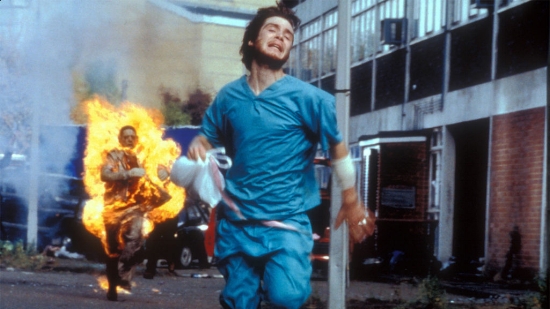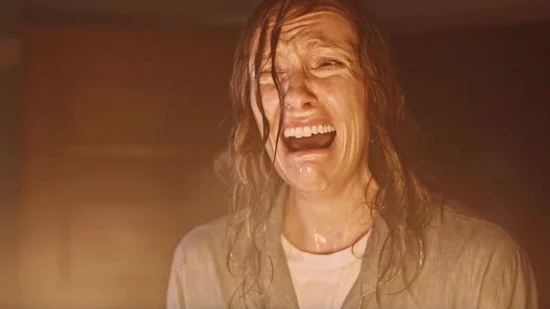Hello there Trove-ians, and thank you once again for tuning in to another Trove blog! This week, I’d like to open by discussing a film that I saw recently that forced me, a strapping, brave, and confident twenty-five year old man, to sleep on the couch with lights on because it … it just scared me so much.
That film was “Hereditary.” Flying under the radar, it’s been met with laudatory critical acclaim, and for good reason; the movie is incredible, an intense fusion of searing family drama and shocking, traumatizing horror. The movie is terrifying, to say the least, but what gives the film that special resonance that all great horror movies possess is that it’s actually trying to say something. In the case of “Hereditary,” the message here is; if we’re unwilling to talk to our family about things that are hard to talk about, do we know them as well as we thought we did? And if we don’t know the ones closest to us, do we know anything?
This is some existential stuff, and it’s a similar theme we’ve seen in all sorts of quality horror movies in the last four or five years. Familial miscommunication is rampant in society these days, and while it’s been terrible for our culture, it’s provided us with some awesome horror movies, like “The Babadook,” “It Follows,” “The Witch,” “A Quiet Place,” and now “Hereditary.” In fact, through history, we’ve seen various eras of conflict represented through a spike in horror movies. Often, you can look at the horror movies of a time period and be able to decipher what a society was going through at the time. And usually, the more horror movies, the worse a time it was. So, given the horror revival America is in the middle of right now, Trove thought we would take a look at how the horror movie has had its finger on the pulse of societal unease by examining different eras of history.
So yes, this is going to be a very chipper blog.
Life During Wartime: Germany’s World War Horror Cinema
While a bulk of this blog is going to be talking about American horror cinema, I think it’s important to go with what the earliest example of horror reflecting society would be, that being German horror film between the two World Wars.
After World War 1, Germany was in a state of utter disrepair and desolation, ravaged by the war. This, as we all know, gave rise to Adolf Hitler, as he fed off of Germany’s damaged psyche, arousing a sense of fierce German pride and superiority.
Nosferatu needs a manicure.
Prior to the rise of the Third Reich, however, Germany was still reeling from the trauma of the war, and it was reflected in a surge of horror movies that became known as Weimar cinema. During this time, Germany released some of the most influential horror movies of all time, all of which work as vessels to show the alienation and isolation that Germany felt after the war. “The Cabinet of Dr. Caligari,” often called the first true horror movie (1920), shows a wealthy doctor abusing his authority, hypnotizing a sleepwalker into committing murder, reflecting Germany’s feeling at having been overly punished for the war. At the conclusion of “Nosferatu,” the first vampire movie ever (1922), the heroine of the film is forced to spend a night with the titular creature to spare her town, bringing to mind Germany’s having to yield power to the winning powers of World War 1. “Metropolis,” “M,” and “Phantom” were other films that portrayed these feelings Germany had, and, not much later, America would follow suit.
The Monster Mash: Universal Monsters, 1930s-50s
After World War 1, America looked to move forward with a new mantra, a “return to normalcy”, a concept championed by President Warren G. Harding. However, it was easier said than done, as the troubles were far from over fore U.S. The Great Depression rolled around in 1929, plunging America into what very well may be its darkest era since the Civil War … and it was followed by World War 2. Suffice it to say, things were not going well.
And it was from this tragic era that sprang American cinema’s most iconic villains of the horror genre -- the Universal Studio monsters. Frankenstein, Dracula, the Creature from the Black Lagoon, and the Mummy all sprang to the silver screen, and all represented an America that was afraid of a terrifying entity that was unstoppable. Was that entity the Depression? The war? America felt powerless, and these monsters symbolized that lack of power, a lack of power that would only grow exacerbated by the atomic bomb.
It’s the End of the World As We Know It: The Nuclear Bomb and Communism
With the dropping of the atomic bomb on Nagasaki and Hiroshima, America and the world, had a whole new crop of fears to deal with, even though the biggest war the world had ever seen just ended. The bomb was a power unlike anything the world had ever experienced, and America’s usage of it had opened the door to a potential arms race with its rivals. Specifically, communist regimes.
For the next forty years, these would be the two biggest things on America’s mind; the spread of communism, and the potential world ending capability of the nuclear bomb. And both of these were reflected in horror movies of the time period, particularly in the ‘50s and in the ‘80s (the ‘60s and ‘70s had some other issues to sort through, but more on that later).
Godzilla tearin' the place up.
Similar to the age of the Universal monsters, the ‘50s saw itself concerned with monsters, yes, but not on the smaller scale of our pals like the Mummy and the Count (not the Sesame Street dude). No, these monsters were massive, cataclysmic, and apocalyptic, that would either take over or destroy the world if they weren’t stopped. Think Godzilla, the Blob, the martians of “War of the Worlds.” We’re talking epic destruction, not dissimilar from the bomb. Gee, there … could be a pattern here.
To add to the fervor of a potential nuclear holocaust, we’ve got Captain America himself, Joseph McCarthy (that’s a sarcastic Captain America reference, for the record. The man was a monster). A senator from Wisconsin in the ‘50s, McCarthy held significant responsibility for the Red Scare, America’s irrational descent into paranoia centered on the idea that evil, undermining Communists were infiltrating our society, posing as Americans. Massive witch hunts occurred, with numerous false accusations being made that ruined people’s lives.
This panic over an enemy that looks and acts just like “us” led to creation of such horror films as “The Thing from Another World” and “Invasion of the Body Snatchers,” films where it was almost impossible to know your friend from your enemy. In no great coincidence, these films were remade when the Cold War began with Russia in the late ‘70s, early ‘80s (and thank god, because those editions are some of the best horror movies ever), as these two ages of American history were defined by a significant lack of trust.
These Violent Not-So-Delights: Violence in America and Film in the ‘60s and ‘70s
Hopping back in time from the Cold War, the 1960s and ‘70s were among the most violent and radical decades America ever saw. Assassinations were rampant (JFK, Bobby Kennedy, Martin Luther King, Malcolm X), the futile and brutal Vietnam War was in full swing, Charles Manson was on the loose, racism was at a boiling point, and presidents who said they weren’t crooks were, in fact, crooks. Things were changing in America big time, as the counterculture movement began, and your traditional, “let’s meet around the dinner table” image of the American family was gone.
I love the smell of Leatherface in the morning.
Enter some of the greatest horror movies ever made. “Night of the Living Dead” was on the surface a zombie film, but was really a meditation on racism and demonization of African Americans, while the film’s acclaimed sequel, “Dawn of the Dead,” took aim at rabid American consumerism. “The Texas Chainsaw Massacre” took audiences on a tour through a barren, savage, shockingly violent America in ruin. “Halloween” showed a masked maniac carving up teenagers in a pleasant suburban neighborhood. “Rosemary’s Baby” took the American family and literally made it a vessel for evil. And the coup de grace, “The Exorcist,” waged an all out assault on the picturesque visions of both the American family as well as religion and faith. It’s no surprise that the darkest corner of American history gave us some of the finest horror movies.
Extremists and the Undead: The 2000s, Zombies, and Terrorism
Jumping forward back past the Cold War and the fairly uneventful ‘90s, we head to the 2000s, which of course saw probably the greatest tragedy America ever had to deal with, being 9/11. It was an act of such jarring suddenness and sorrow that America now had a new mortal fear to cope with -- terrorism.
Extremism and terrorism had been something America had obviously been familiar with prior, but now that it had reached our shores with such starling violence, it appeared truly indomitable. The security blanket we thought we had was gone, and America was faced with the uncertainty of the War on Terror. Could the tide of terrorism legitimately be stopped, or had it already pervaded itself through society, like some sort of societal virus?
The word “virus” takes us to how these fears were best reflected in horror films of the time, that being the zombie movie. In the early-mid 2000s, zombie movies just exploded. I tried to look up and count how many zombie movies actually came out in the 2000s, and there were literally so many I couldn’t count. But the best of the bunch, and possibly the best zombie ever, “28 Days Later” and its sequel, stand as the finest examples of what the zombie genre represented; radical versions of everyday people, seemingly endless in their numbers, seeking our destruction. Sound familiar?
Cillian Murphy hauls ass in "28 Days Later."
All in the Family: The Horror Renaissance of the 2010s
Which brings us to today. As the above heading says and I stated earlier, we’ve gone through a horror revival the last four or five years or so. After the zombie craze died down in the later 2000s, it seemed like the horror genre had just gone straight comatose. But in 2014 we saw the release of two stone cold horror classics with “It Follows” and “The Babadook,” and horror was back.
But why was it back? What’s going on in our current society to bring the horror back to the heights of the old days? There are different theories, but I’m thinking the reason is communication, or a lack thereof, within family. Pardon me while I briefly rant to discuss this theory.
Social media and technological advancement has its benefits of course, massive benefits to society, but it seems to be with a loss of legitimate human connection and, in particular, a connection with their family. People have retreated into their social and technological bubbles, and now we learn about people from pictures, profiles, and instant messaging more than just speaking with them in person. While we think we may know people very well based on these things, it turns out that we actually may not know them as well as we hoped, as something gets lost in translation. While relationships in general have suffered, the biggest casualty of this societal disconnect is the concept of the family.
Toni Colette in "Hereditary," looking ... a little stressed.
If you look at this new wave of horror movies, an absence of communication within a family, and the following disintegration of that family appears to be their M.O. In “It Follows,” the teens at the center of the film have to battle the titular “it” on their own, an adult presence completely detached from their lives. In “The Witch,” the immaculate horror folktale from 2016, a family accuses their daughter of being a witch, and instead of listening to her defense, damn her without hesitation. “Get Out” sees a duplicitous white society telling a black man what they think he wants to hear, but it’s all cloaked in artifice with more malevolent intent. And in “The Babadook,” “Hereditary,” and “A Quiet Place,” families are faced with devastating trauma and grief, but their inability and unwillingness to just talk about it threatens to tear the family apart, and allows whatever evil forces at work in the film to wreak havoc.
There’s nothing like a great horror movie. Nervous laughter, sweaty palms, jumping out of your seat, potentially soiling yourself; it’s a blast. But while horror movies are a hell of ride, if we go a few years without one, don’t be too upset, because it probably means life is going … pretty good.
Well thanks for reading again this week guys! It is always an honor and a pleasure to write for you fine people. If you enjoyed what you read please check our other blogs on our website!
Adios mis amigos!






